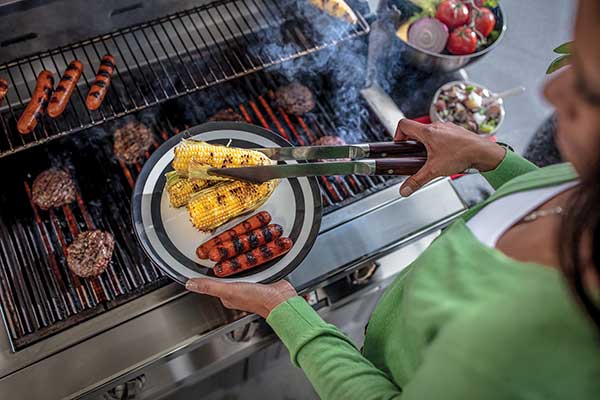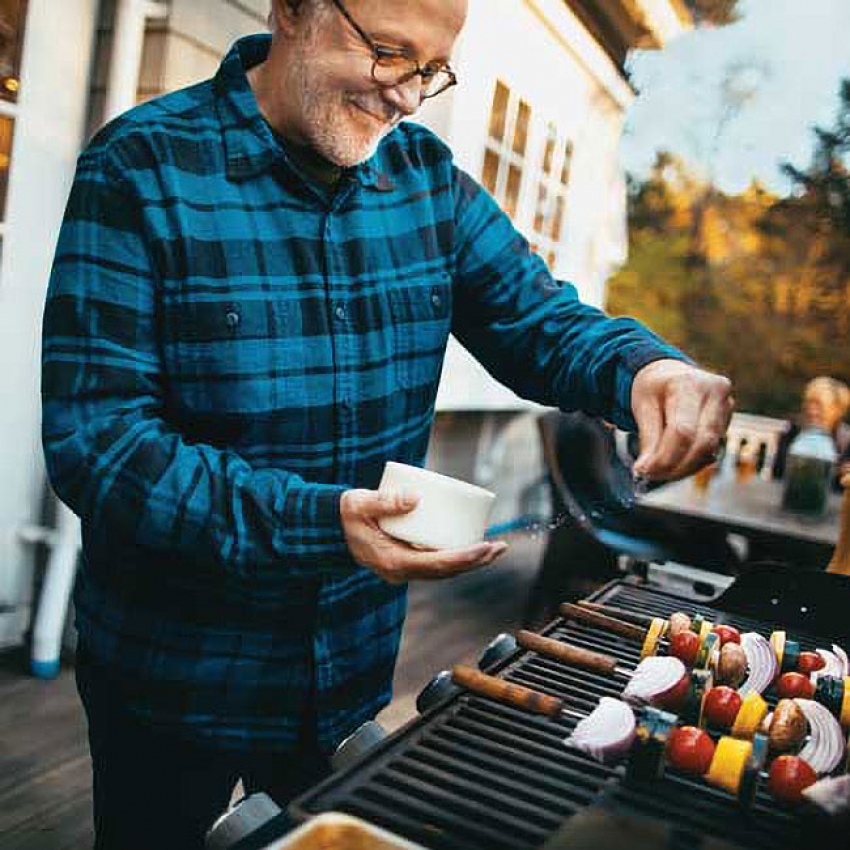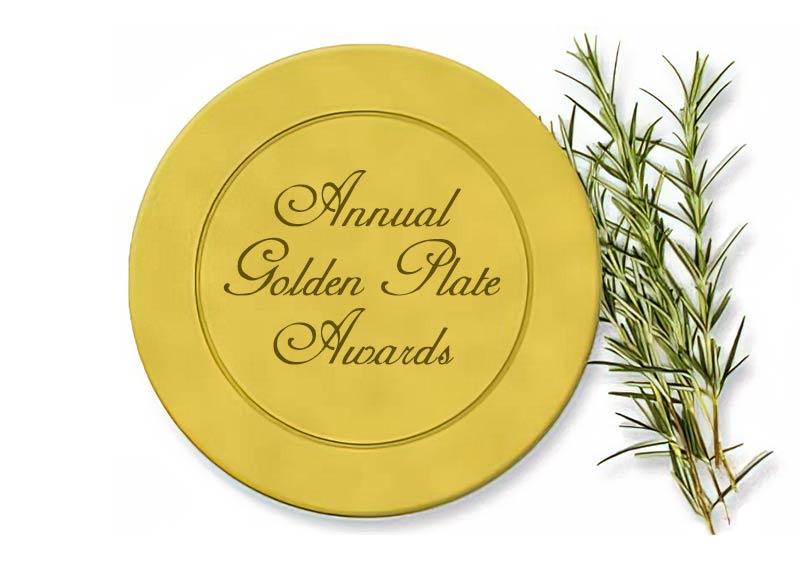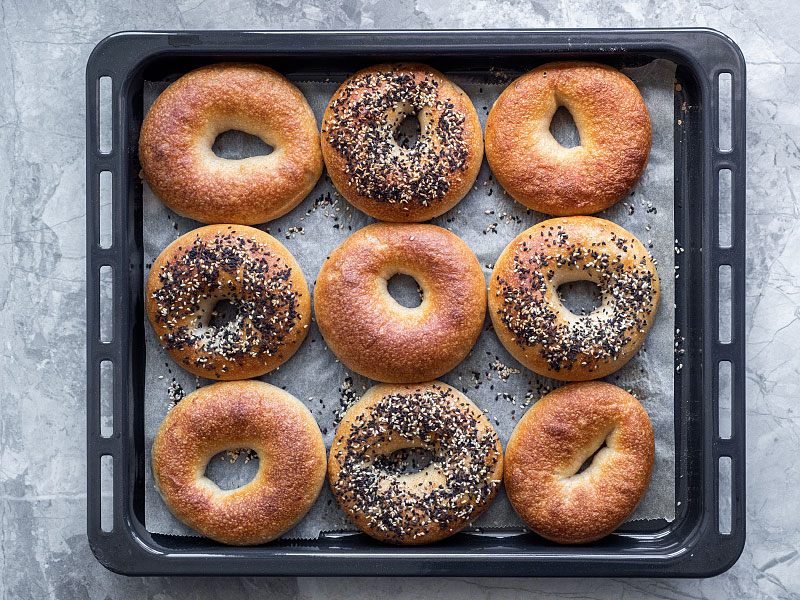Valuable grill tips for a safe cookout.
Big Idea
- Be safe when handling your propane tank
- Don't leave the propane tank in a hot car
- Always store your propane cylinders outside
- Make sure the connection is tight, and when you're done that you turn it off!
Safe & Sizzling Grilling Tips
When temperatures soar, many American families may be seeking a break from the monotony of their everyday routines. To make the most of the extra time at home, firing up the grill can be a simple solution for relatively quick food preparation that also allows for spending time with loved ones in the comfort of your own backyard.
A gas grill provides families flexibility for preparing everything from a casual meal of burgers and hot dogs to an upscale surf and turf menu. You can prepare virtually every course on the grill, including protein, veggies, sides and even fruits like pineapple or watermelon.
Whether you are grilling for the first time or the first time in a long while, above all, play it safe during your next cookout.
Transporting Propane Cylinders
Unless your grill connects directly into your home's propane system, you're likely to use a standard 20-pound propane cylinder to fuel your grill. When transporting a propane cylinder, place it in the vehicle securely and upright so it can't fall, shift or roll. Avoid leaving a propane cylinder in a hot vehicle; always head straight to your destination and remove the cylinder when you arrive.
Lighting Your Gas Grill
 Propane gas grills are popular because they provide fast, efficient heat for grilling. To safely operate your gas grill, consider these tips from the Propane Education & Research Council.
Propane gas grills are popular because they provide fast, efficient heat for grilling. To safely operate your gas grill, consider these tips from the Propane Education & Research Council.
- Follow the manufacturer's instructions. Whether it's assembly, use, maintenance, cleaning or storage, make your grill manufacturer's instructions your go-to resource for safe grilling.
- Position the grill in a safe location. Keep your grill outdoors and away from the house based on the recommendations of the equipment manufacturer. Choose a level surface that is clear of outdoor furniture, overhead trees or other potential fire hazards.
- Verify the grill is off. All knobs and switches should be turned to the off position before you attempt to attach or replace a propane cylinder.
- Ensure a tight connection. When attaching the propane hose to the fitting on your grill, be cautious of cross-threading. Keep twisting by hand until the hose and fitting are as tightly sealed as possible to minimize the chance of leaks.
- Check for leaks. Use a leak detector solution or soapy water solution to check connections for leaks. Slowly open the cylinder valve and watch for bubbles, which indicate a leak. If bubbles appear, close the valve, tighten the connection and check again. Follow this procedure every time you replace a cylinder.
- Follow proper lighting procedures. Follow the manufacturer's lighting instructions to generate a flame. Regardless of the grill model, keep the lid open and avoid leaning over the grill when lighting it.
- Follow proper relighting procedures. If your flame goes out, turn off the gas and refer to your owner's manual. At a minimum, keep the lid open and wait at least 15 minutes before relighting.
- Be present. Stay close and never leave your grill unattended.
Storing Propane Cylinders
Your propane cylinder can remain attached to the grill when not in use, but if you have extra cylinders that are not in use, it's important to store them safely and properly. Never store a small cylinder inside; it should always be kept outside, never in an enclosed area like a basement, gar age, shed or tent. Choose a location away from potential heat sources over 120 F, such as a stove or fireplace. Never store extra cylinders near the grill. Keep ignition sources away from the area while handling or transporting a propane cylinder.
Find more tips for grilling safely at propane.com.
Find a Grill to Suit Your Tastes
Just like an indoor gas range, propane grills give you instant on-off convenience and precision temperature control for perfectly done meals. With no coals, soot or ash, cleanup is a breeze, too.
Propane grills come in a variety of sizes and styles, with different perks like side burners for sauces and even rotisserie features.
First, consider your budget and what size grill will reasonably fit your space. Then determine which features are essential, as well as what extras might make your grilling experience more enjoyable.
When you're ready to browse, remember the more burners a grill has, the more you can cook in different temperature zones so you can perfectly grill fish, burgers and corn simultaneously, for example.
For a large family, getting a larger grill allows you to put all the food on the table at once rather than grilling in batches.
More Ways to Use Propane Outdoors
When most people think of propane cylinders, the all-popular gas grill comes to mind. However, propane can fuel many other aspects of your outdoor living space. Full outdoor kitchens, patio heaters, fire pits and flame lighting are all examples of propane-powered outdoor products that can keep the fun going well into the night. In addition, pools and spas can heat quickly and efficiently using propane heat.
 SOURCE:Propane Education & Research Council
SOURCE:Propane Education & Research Council



 Propane gas grills are popular because they provide fast, efficient heat for grilling. To safely operate your gas grill, consider these tips from the Propane Education & Research Council.
Propane gas grills are popular because they provide fast, efficient heat for grilling. To safely operate your gas grill, consider these tips from the Propane Education & Research Council.















